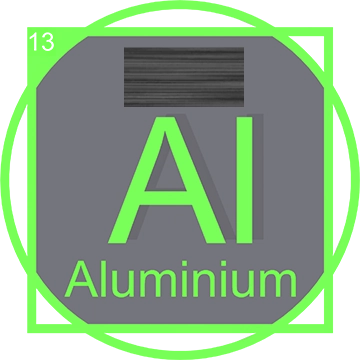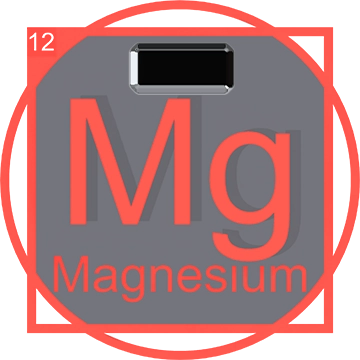Silicon (Si): The Backbone of Modern Technology
Silicon, the 14th element on the periodic table, is a fundamental component of the universe. Widely known for its versatility and broad use in modern technology, Silicon has become synonymous with the digital revolution. This article provides an in-depth look at Silicon, detailing its discovery, role in the periodic table, and extensive applications in various technologies.
Discovery of Silicon
Silicon was first identified by Antoine Lavoisier in 1787, who recognized it as a component of a class of nonmetals. This discovery was revolutionary in the field of chemistry, establishing the foundational work for future research.
It was later isolated in a purer form by Jöns Jacob Berzelius, a prominent Swedish chemist, in 1824. Berzelius succeeded in preparing amorphous Silicon, a non-crystalline form of the element, by heating potassium with silicon tetrafluoride in a groundbreaking experiment that highlighted its potential. However, the journey of Silicon did not stop there; it was further refined in 1854 by Henry Sainte-Claire Deville, who produced crystalline Silicon through a novel smelting process. This advancement was critical as it provided a more stable form of Silicon, which could then be utilized in various industrial applications. Deville’s method involved reducing quartz into Silicon by using highly reactive metals, a technique that paved the way for the mass production of Silicon and set the stage for its predominant role in the industrial and technological revolutions of the 20th century.
Position in the Periodic Table
Silicon is situated in group 14 of the periodic table, residing in the carbon family alongside elements like carbon, germanium, tin, and lead. This positioning is critical as it shares many chemical properties with its group members, most notably its semiconducting abilities, which are essential for its role in modern electronics and solar cells.
Pure Silicon in Science
The properties of pure Silicon that make it so valuable in technology are also of great scientific interest. Scientists extensively study pure Silicon to understand the behavior of semiconductors, especially under different environmental conditions. This research is crucial for advancing applications in fields ranging from quantum computing to photovoltaic energy production, where the intrinsic qualities of pure Silicon play pivotal roles.
Applications of Silicon in Technology
Silicon's most profound impact lies in its use in the semiconductor industry. It is the primary material used for integrated circuits and microchips, which form the foundation of all modern electronic devices like smartphones, computers, and televisions. Additionally, Silicon is used in the production of solar panels, where it helps convert sunlight into electrical energy with high efficiency.
Aside from its electronic uses, Silicon finds application in the construction industry through materials like silicones — polymers that are flexible, water-resistant, and durable. These materials are used in adhesives, sealants, and as coatings that help protect materials from environmental damage.
How Silicon is Made
Silicon is primarily obtained from silica (silicon dioxide), which is the most abundant mineral in the Earth's crust. The process of converting silica into pure silicon involves heating it with carbon in an electric furnace at temperatures over 2000°C. This method reduces the silica to silicon, releasing carbon dioxide in the process. High-purity silicon, used for semiconductor applications, is achieved through further refinement using the Siemens process, where silicon is deposited from a gas-phase reaction onto heated rods, resulting in hyper-pure silicon crystals.
Silicon Extraction from Sand
Silicon, a crucial element in both the technology and construction industries, is predominantly extracted from sand, specifically quartz sand, which is composed almost entirely of silicon dioxide (SiO2). This abundant mineral undergoes a reduction process where it is mixed with carbon and heated in high-temperature furnaces to produce metallurgical grade silicon. Major deposits of quartz sand are found in several regions around the world, including the United States, particularly in the Midwest, and international locations such as Australia, Brazil, and Russia. These sands are mined on a large scale to meet the global demand for silicon, which is vital for making everything from electronic components and solar panels to silicones and sealants used in various industrial applications.
Silicon Mining and Associated Resources
Silicon itself is not mined; instead, silica is extracted from quartz mines located worldwide. Major sources include the United States, Russia, Brazil, and China. In these mining sites, silica often coexists with other mineral resources such as aluminium (from clays and feldspars), magnesium, and various other minerals used in industrial processes.
Current Uses of Silicon
Today, silicon's most significant use is in the electronics industry as the base material for semiconductors. This application dominates its consumption, integral to devices like computers, smartphones, and tablets. Additionally, silicon is crucial in the manufacturing of solar panels, where it serves as the primary material for photovoltaic cells that convert sunlight into electricity.
Beyond electronics, silicon is utilized extensively in the production of synthetic compounds like silicones. These versatile polymers are not only used in lubricants, adhesives, and coatings but also serve critical roles in sealants and insulating materials. Their unique properties, including thermal stability, water resistance, and electrical insulation, make them indispensable in construction and medical technologies. Furthermore, silicon is integral to the production of aluminum-silicon alloys, which are vital for automotive and aerospace construction due to their lightweight and high strength. These alloys are particularly prized for their ability to withstand high temperatures and corrosive environments, making them essential in the manufacture of engine components, undercarriage parts, and various other structural elements that require robust materials to ensure safety and efficiency in demanding operational conditions.
Future Prospects of Silicon
Looking ahead, the demand for silicon in technology sectors is only expected to grow. Innovations in nanotechnology and computing could see silicon's properties being harnessed in even more advanced ways, potentially leading to breakthroughs in quantum computing and artificial intelligence. Furthermore, as the global push for renewable energy sources intensifies, the role of silicon in solar energy technologies could expand, leading to more efficient solar cells and a significant reduction in production costs, helping to combat climate change effectively.
The Convergence of Silicon Technology and Human Potential
In a vision of the future where technology and human capabilities intertwine, advanced silicon-based technologies emerge as the backbone of this new era. Inside the confines of a high-tech spaceship, two figures embody the fusion of human intelligence and robotic precision. One, a half-man, half-robot, showcases the intricate integration of silicone chips and circuitry within his body, illustrating how advanced materials like silicon enhance human functionalities and extend our capabilities beyond natural limits. The other, a half-woman equipped with 3D augmented reality (AR) and virtual reality (VR) goggles, interacts with a digital interface that seamlessly blends with her environment. This scenario not only highlights the role of silicon in facilitating sophisticated technological interfaces but also predicts its pivotal role in future AI applications and immersive virtual experiences. As silicon continues to push the boundaries of what's possible, it paves the way for a world where technology enhances every aspect of human life, making previously unimaginable levels of interaction and integration possible. This glimpse into the future underscores the profound impact of silicon in driving the next generation of technological advancements in aerospace, artificial intelligence, and beyond.











